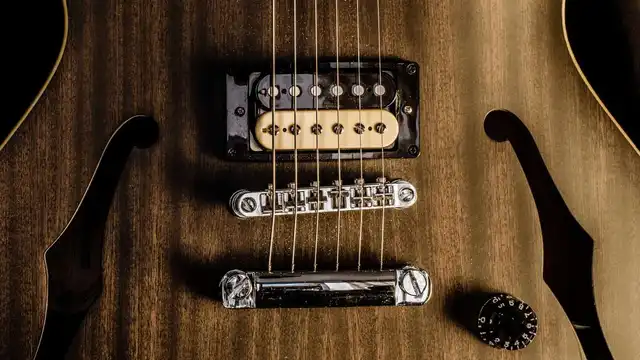Is It Safe To Take All The Strings Off Your Guitar At Once?


Be sure to subscribe to our YouTube channel to keep up with more great videos like this one:

Transcription
Is it safe to take all the strings off your guitar when you're changing them or is it better to change them one at a time and ensure that you have constant tension on the neck? Let's talk about it. Believe it or not, this is the one most controversial issues in all of guitar. Everybody takes one side or the other and they believe quite vehemently in whatever side that is. But, is there an actual answer? In my opinion, yes. The truth is, and I know I might catch some heat for this, there is nothing unsafe about taking all the strings off of your guitar all at once. A lot of people think that it might cause the neck to bow backwards or something like that but, the truth is, your guitar's neck is way sturdier than I think a lot of people realize. Not only is wood tougher than people seem to think, you have a steel truss rod going the entire length of the guitar's neck helping to reinforce it and ensure that it's not going to bow forward or backwards for that matter. Now I get it, your truss rod is designed to put tension on your neck in order to keep it in position, so one might think that if your truss rod is really well tightened, and you take all the strings off your guitar it could cause it to bow back the other way but this is accounted for in the construction of the guitar, and it just doesn't really happen in real life. Now the other thing that people will say is that taking all the strings off your guitar all at once means that you're going to have to do an entire new set up for the guitar. That isn't true either. I've seen all sorts of different techs, I've talked with different techs, or even luthiers themselves about this, and when it comes down to it, the tweaks that you're going to have to make after taking all the strings off your guitar, assuming you're keeping the gauge the same, are minimal—if they exist at all. Take for example, people that store or treasure collectible guitars or people that travel or fly with guitars. They'll always tell you the same thing, take the tension off the strings before you fly or if you're storing it, a lot of times they'll put no strings on it at all or strings under very little tension. This doesn't cause any issues with the guitar, in fact, it's generally safer. If you're guitar had its own way, it probably would prefer to have no strings on it at all. Now, there are a few instances in which it might be better to change strings one at a time but it doesn't have anything to do with safety or risking the guitar's setup. The best example I can think of is when you're dealing with floating tremolos, like a Floyd Rose or even an Ibanez Edge. Those tremolos are generally kept up in position by the tension of the strings so if you take all the strings off at once you're going to have it falling into the body of the guitar. It doesn't risk damaging it or anything like that, it just makes it a little bit harder to re-string and some people that like those systems prefer to just go one at a time to keep that tension constant. The other instance is when you're dealing with a guitar which has a bridge that isn't actually attached to the guitar itself. A lot of archtop guitars are like this. A lot of mandolins are like this as well. In these instances, it doesn't pose a risk to take all the strings off, it just might make your life a little bit harder to have to worry about the position of that bridge versus changing the strings one at a time and keeping the bridge in the same place. Now, all that said, if you're one of the folks that prefers to change their strings one at a time, there's nothing wrong with that. Keep doing it. It's not going to pose any issue, it certainly isn't going to hurt in any case. But, if people have been telling you or dogging you about changing all the strings at once and telling you that it's going to ruin your guitar, mess up your neck or throw your set up off, it just isn't true. Don't believe it. You can do whatever you want. So, what do you think? Do you prefer to change all the strings at once, clean off your fretboard and do all that? Do you prefer to change one string at a time for various reasons? Tell us about it down in the comments. Be sure to subscribe to our channel so you can keep up with more great stuff like this.Other Posts you may like

Guitar Strings Order: How the Guitar is Tuned and Why

Best Acoustic Guitar Strings for Beginners

Two Handed Tapping: Our Top 8 Tappers of All Time

Which Guitar Strings Wear Your Fret Wire Down More?

What is Nashville Tuning? Its History, Best Guitar Strings & Uses

Guitar Scale Length Explained: String Tension & Playability
0 Responses
Leave a Reply
Your email address will not be published. Required fields are marked *




